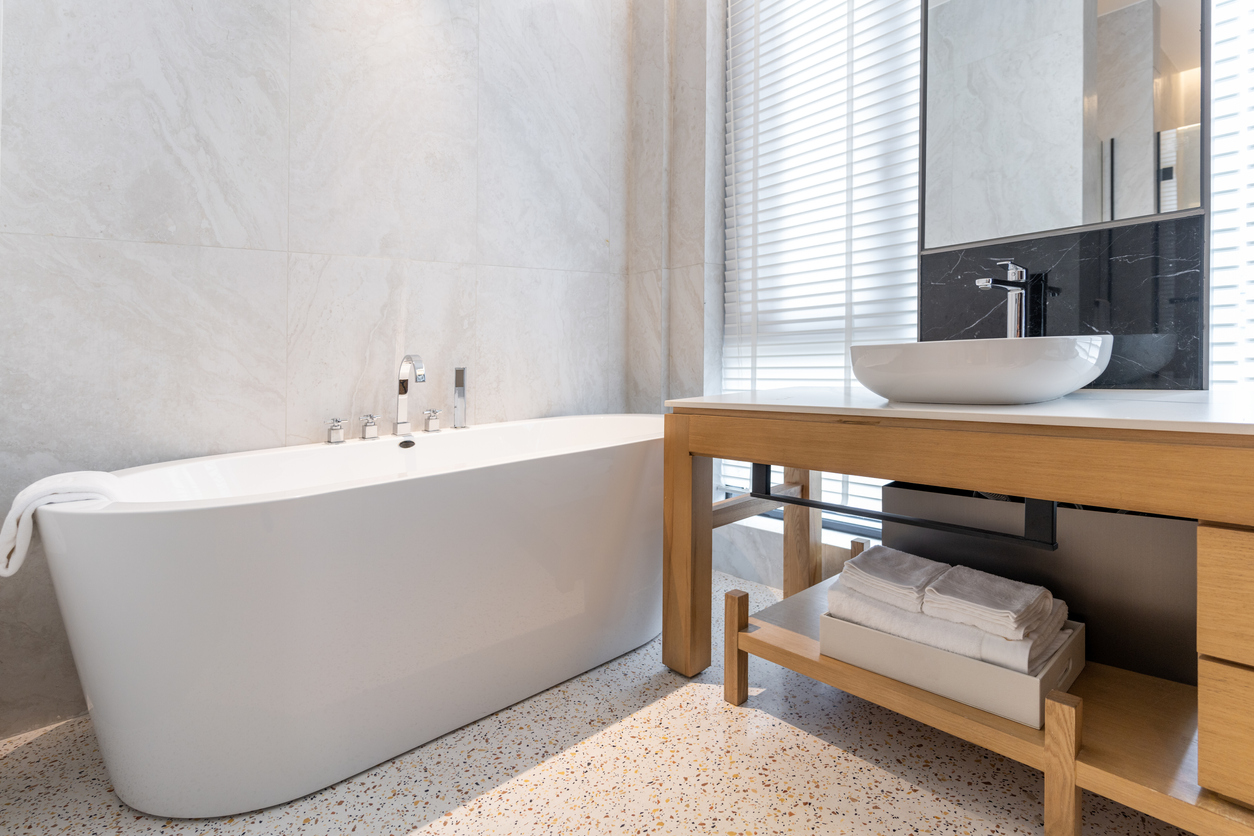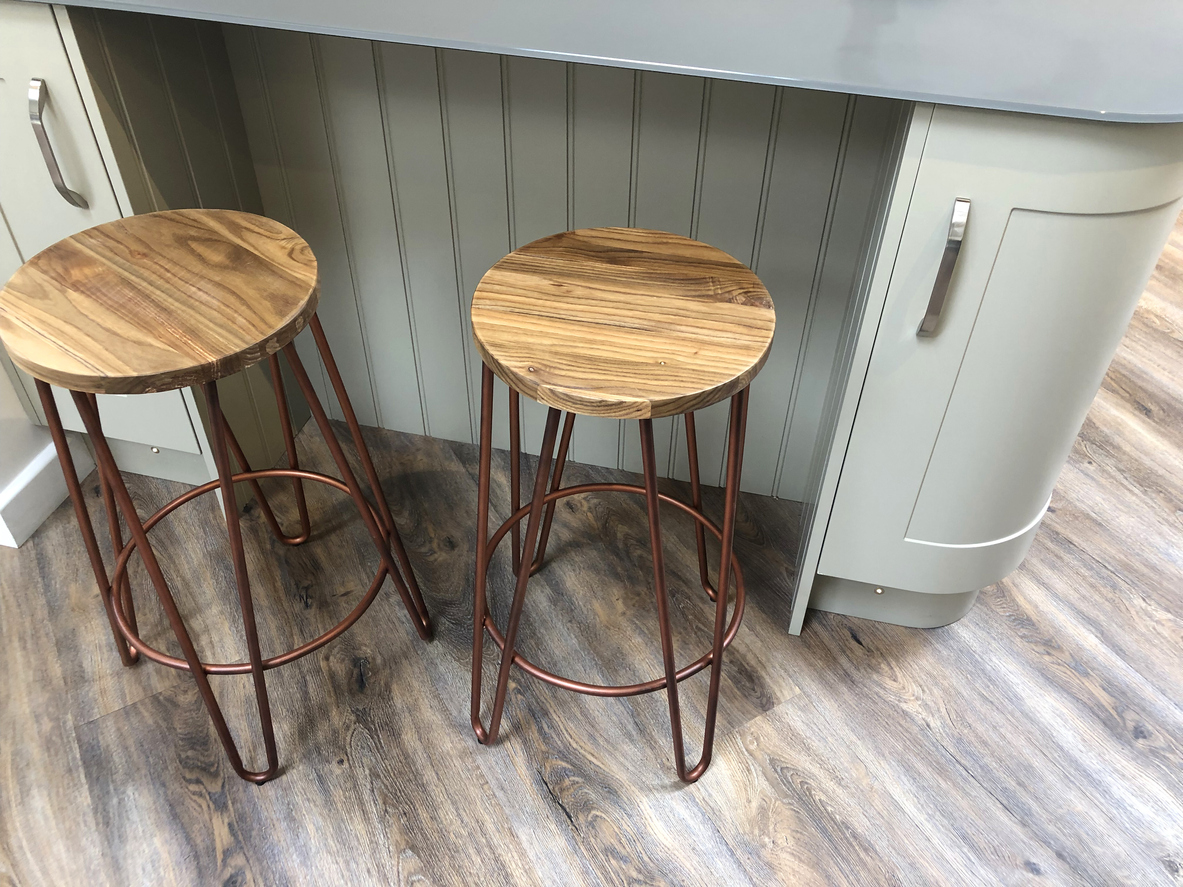Design Trends to Follow in 2023

Every year, new concepts take the interior design world by storm, with design experts conjuring approaches and fresh new ways to design a home. As we say goodbye to trends like decorative crystals, and mass-produced “multicultural” knickknacks, look and plan ahead with this design outlook for 2023.

Calm materials
Leave the stresses of the world behind in a home optimized for maximum relaxation. You can start by investing in soothing materials that are expected to take center stage, such as travertine. Architectural Digest has described travertine, an earthy yet elegant limestone that’s subdued with a soothing texture, as the epitome of “material-forward zen decorating where visual calm is the holy grail.” You can also add soft, hand-woven rugs in just about every room to bring a soft touch to hard surfaces.
In addition, as people prioritize comfort, stuffy, reserved, and “staged” interiors are phasing out. Imbue a little more life, personality, and beloved objects into rooms that, until recently, limited your decorative choices to anonymous trends. Remember when you could only decorate your living room with ceramic jars, unread coffee table books, fiddle leaf figs, and woven baskets? That trend is no more.

Digital Lavender
The color experts at Coloro and the trendwatchers at WGSN have named Digital Lavender 2023’s Color of the Year. While this color may appear in product packaging, fashion, and electronics, it will also make waves in 2023 interiors. A slightly neon version of traditional lavender, this color inspires wellness, calm, and recuperation. “Already embedded in digital culture, we expect this imaginative colour to converge across virtual and physical worlds,” says WGSN.
Why use this specific color in your home? It helps you achieve the calming effect detailed above, without the need to solely rely on neutrals. In recent years, house plants have been integral components of relaxing interior design, and Digital Lavender adds an exciting contrast color that pairs nicely with potted greenery.
Introduce Digital Lavender for a touch of comfort in neutral rooms primarily decorated in white, tan, natural wood tones, earth tones, gray, or black. You can also add it as a pop of color in rooms that primarily consist of hard surface materials, such as kitchens. To refresh your home with stylish calm, seek out throw pillows, original wall art, or area rugs with Digital Lavender as well.

Glitz and glamour
Inspired by celebrity culture, younger generations have spurred a fascination with glitz and glamour—including interiors that, as with ’80s high design, prize conspicuous consumption. Spare no expense, and leave your reservations at the front door; 2023 interiors may be delightfully gaudy, even imbuing laundry rooms, playrooms, and media rooms with high-end elements.
Keep an eye out for palatial aesthetics, including Corinthian columns and busts, as well as statement art that screams wealth. Glimmering metals will be in, and ornate antiques may come out of storage. Homebuyers may seek out classically high-end designs like Tuscan and Colonial and then update them with new materials for a 2023 refresh.
Make a regal statement with matching bouquets of fresh flowers, and set out your most impressive travel acquisitions on full display. Whether you’re continuing to work from a home office next year or your home is your end-of-day refuge, fill your space with features that make you feel relaxed and refined at the same time.

Statement walls
Walls should be more than the blank space between frames. 2023 will see the bourgeoning popularity of the statement wall. This style is similar to the popular accent walls of the early aughts but with much more texture and artistic flair.
Perfect for Instagram selfies and Zoom backgrounds, statement walls with dynamic wallpaper or oversized art will liven up any room. Also consider eccentric features like oversized bookshelves, painted murals, or unexpected materials like checkered wood paneling. The recent trend of gallery walls fits comfortably into this category as well, and they’re unlikely to go away soon.
You may even see biophilic walls become popular in 2023. Devoted to all things flora, biophilia includes vertical planters, shelves of small potted plants, and walls lined in tropical greenery. These statement walls maximize visual appeal without wasting precious square footage.
These designs may sound quirky, but planning your own statement walls will be a fun way to greet 2023. Plus, you can knock out the statement walls and overstated glamour trend listed above in one go.

Curvature
2023 will welcome a penchant for soothing curvature. You might find rounded archways, railings, or bathroom and kitchen countertops in new home builds next year.
Why are design experts softening lines for 2023? Curvature is naturally pleasing to the eye and inspires comfort, whereas straight, right angles have a more formal feel.
According to the interior design blog ITALIANBARK, searches for curved walls, countertops, and furniture have been increasing in 2022 and will likely lead to a noticeable trend in 2023. In other words, what people research now will be implemented by early next year. One subset of this trend is the spread of mushroom-like lamps and end tables like this product from AllModern. Find your own way to bring home curved, calming decor or architecture.
2023 is going to be a year of marked cultural shifts with home design changes to match. Consider this your guide to get current and lead the way into a new era of alluring design—an era centered on your own whims and what makes you calm and happy.




















